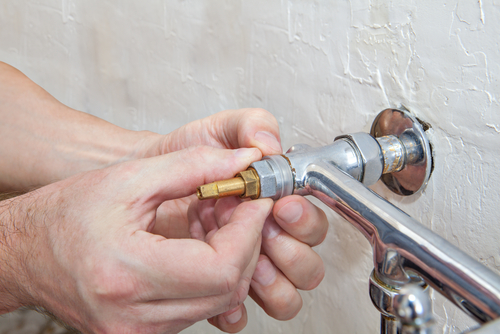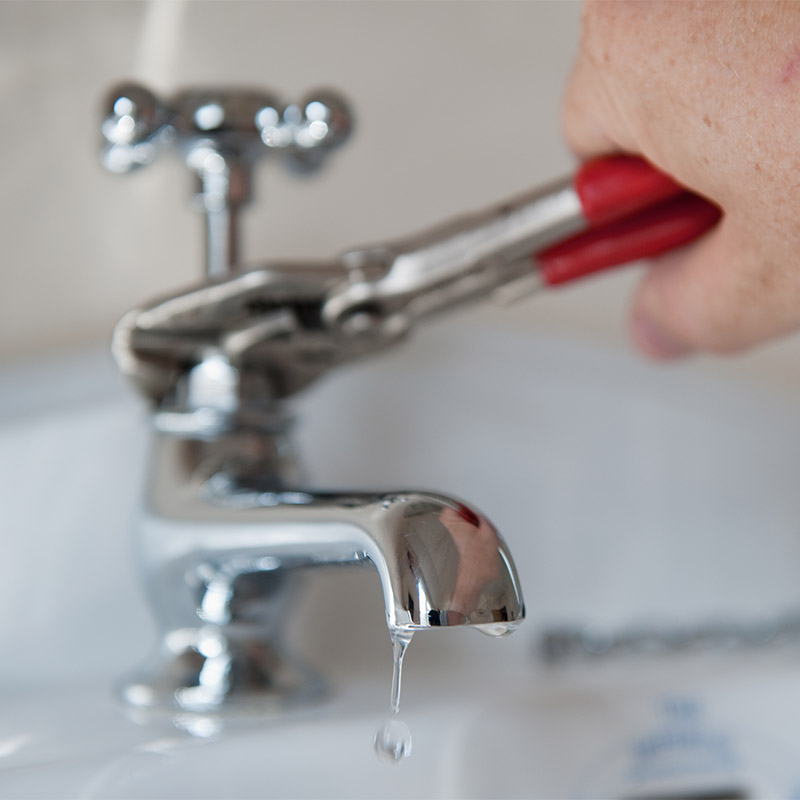Learning the Significance of Correcting a Leaking Faucet
Learning the Significance of Correcting a Leaking Faucet
Blog Article
We have discovered this post involving Should I Repair or Replace a Leaky Faucet? below on the internet and felt it made good sense to write about it with you on this site.

Leaking faucets might feel like a small trouble, however their impact goes beyond simply the annoyance of the sound. From drainage to sustaining unneeded economic expenses and wellness dangers, neglecting a leaking tap can result in various effects. In this post, we'll delve into why it's important to address this usual home problem immediately and efficiently.
Wastefulness of Water
Environmental Influence
Trickling faucets add considerably to water waste. According to the Environmental Protection Agency (EPA), a single faucet trickling at one drip per second can squander greater than 3,000 gallons of water each year. This not only stress water resources however likewise impacts communities and wildlife depending on them.
Step-by-Step Overview to Fixing a Dripping Tap
Tools Called for
Before trying to repair a leaking faucet, collect the essential devices, consisting of a flexible wrench, screwdrivers, substitute parts (such as washing machines or cartridges), and plumber's tape.
Common Faucet Issues and Their Solutions
Identify the type of tap and the certain problem triggering the drip. Common issues consist of worn-out washers, corroded valve seats, or damaged O-rings. Describe maker guidelines or online tutorials for detailed assistance on repair work.
Financial Expenses
Increased Water Costs
Beyond the ecological impact, dripping taps can blow up water expenses substantially. The gathered wastage with time translates right into greater energy expenditures, which might have been avoided with prompt repair services.
Possible Home Damage
Additionally, prolonged leaking can lead to damage to components and surfaces bordering the tap. Water build-up can create staining, rust, and even structural issues if left neglected, resulting in extra repair costs.
Wellness Worries
Mold and Mold Growth
The continuous existence of moisture from a trickling faucet develops an optimal atmosphere for mold and mold growth. These fungis not only endanger interior air top quality however also pose health threats, particularly for individuals with respiratory problems or allergies.
Waterborne Diseases
Stagnant water in trickling taps can become a breeding ground for microorganisms and other virus, raising the threat of waterborne diseases. Contaminants such as Legionella germs grow in stagnant water, possibly resulting in serious health problems when consumed or breathed in.
Do it yourself vs. Specialist Repair
Advantages and disadvantages of DIY Repair Service
While some might attempt to fix a dripping faucet themselves, do it yourself repair services feature their own collection of difficulties. Without proper knowledge and devices, DIY efforts can aggravate the concern or lead to incomplete fixings, lengthening the trouble.
Advantages of Employing a Professional Plumber
Working with an expert plumber makes certain that the underlying source of the leaking tap is dealt with successfully. Plumbings have the experience and tools to diagnose and fix tap concerns successfully, saving time and lessening the risk of additional damage.
Environmental Obligation
Private Payment to Conservation
Taking duty for taking care of dripping faucets aligns with more comprehensive initiatives toward water preservation and ecological sustainability. Every individual's actions collectively make a significant influence on protecting valuable resources.
Sustainable Living Practices
By focusing on timely repair work and embracing water-saving practices, people contribute to sustainable living techniques that benefit both existing and future generations.
Safety nets
Normal Maintenance Tips
To stop dripping faucets, execute routine upkeep such as cleaning up aerators, evaluating for leaks, and changing damaged components without delay. Furthermore, think about setting up water-saving gadgets or upgrading to much more efficient components.
Value of Prompt Repairs
Dealing with leaking faucets as soon as they're seen avoids additional water waste and prospective damage, ultimately saving both water and cash in the future.
Effect On Home Value
Assumption of Well-Maintained Residential Property
Maintaining a residential or commercial property in good condition, including resolving maintenance concerns like dripping faucets, improves its perceived worth and worth among possible customers or renters.
Impact on Resale Value
Properties with properly maintained plumbing fixtures, consisting of faucets, command higher resale worths in the property market. Attending to dripping taps can contribute to a favorable perception throughout property inspections and arrangements.
Final thought
Attending to a dripping faucet goes beyond mere ease; it's a necessary step toward conserving water, reducing economic prices, and protecting health and wellness and property. Whether through do it yourself repair work or specialist help, taking action to fix trickling taps is a little yet impactful way to advertise accountable stewardship of resources and add to a much healthier, much more sustainable future.
How to Fix a Dripping or Leaky Faucet
A leaking faucet is one of the most common problems that homeowners encounter, but it being commonplace doesn’t make it any less annoying. The constant drip drip drip of a leaking bathtub faucet, showerhead, or sink tap can disturb your home’s serenity. Left neglected, a dripping faucet can also result in higher water bills and discoloration or mold growth in your sink or plumbing fixtures.
Fortunately, you don’t have to be a trained plumber to know how to stop a dripping faucet. With some basic tools, replacement parts, and a little patience, leaky faucet repair is a breeze. In this article, we’ll explain what causes dripping faucets and how you can fix them.
What Causes a Leaking Faucet?
Kitchen and bathroom faucets come in all manner of designs, but most involve some combination of valves, O-rings, seals, and washers. The O-ring is usually the weakest link, but any one of these pieces can wear down over time. Heat, moisture, temperature fluctuations, minerals, mold, and movement can contribute to warping and corrosion, breaking the watertight seal. This just comes with the territory of being a homeowner. Everything is always subject to wear and tear, and some component parts of your appliances and fixtures need to be replaced on occasion. At least replacement O-rings are cheap!
More rarely, dripping faucets can be a symptom of excessively high water pressure. Were this the case in your home, you would probably notice that the leak is not isolated to one faucet. Water pressure issues are harder to resolve on your own. We recommend contacting a professional plumber if you suspect your water pressure is too high.
How to Fix a Dripping Faucet
Pipe wrench or monkey wrench Allen wrench set Screwdrivers Old towel or rag Shut off the water.
Before you do anything, you need to turn off the water to keep from drenching your kitchen or bathroom. You should find a valve under the sink and against the wall. Once you’ve turned this valve, try turning the faucet on to confirm that the water source has been cut off.
If you can’t locate your local valve for the faucet you’re working on, you can always shut off the water to the house at the main valve. Of course, this will prohibit anyone from using the sinks, showers, or toilets while you’re working on the faucet that’s giving you trouble.
Plug or block the drain.
You’ll be disassembling the faucet and removing some small bits of hardware. Plug the drain with a stopper or rag to avoid the possibility of a small screw falling into your P-trap.
Take apart the faucet assembly.
There are several varieties of kitchen and bathroom faucets, each with its own manner of assembly. For detailed instructions on how to disassemble your faucet, you can refer to the fixture’s manual or contact the manufacturer. If you know whether you have a ball, disc, cartridge, or compression faucet, you can find detailed schematics online.
In general, you need to begin by removing the faucet handles. You might notice a small screw that you’ll need to remove with a screwdriver or Allen wrench. If you don’t see any visible securing hardware, it’s likely hidden under a decorative cap that can be unscrewed or popped off with flathead screwdriver.
Remove each piece methodically, consulting a schematic when necessary. Take notes or arrange the pieces in such a way to make it easier to correctly reassemble the faucet later.
Remove the cartridge.
Once you’ve removed the handles and securing hardware, you should be able to remove the valve cartridge or stem. Some cartridges will slide right out. Other faucet models will require you to loosen a nut with a pipe wrench before you can remove the valve stem.
Examine the exposed hardware.
With the cartridge or stem removed, inspect the component parts. Check the rubber O-rings for wear and tear. Also examine the seat washer for corrosion or other damage. These pieces are usually the responsible parties for a dripping faucet, but it’s worth inspecting the other component parts while you have the faucet disassembled.
Find replacement parts.
Once you’ve identified which faucet component has failed, find an identical replacement. Your local hardware store should have O-rings, seat washers, and other standard components in stock. If you have a luxury or uncommon faucet, you may have to contact the manufacturer for a replacement part.
It’s a good idea to take your old parts with you to the hardware store so you can compare them with the store’s inventory and be sure you’re purchasing the correct replacement.
Reassemble the faucet.
With your new parts in hand, reconstruct the faucet and handles. Don’t be tempted to overtighten screws or nuts. You might think this could create a better seal, but it can instead damage or bend a delicate part of the assembly and create a new problem for you.
Turn on the water and test the faucet.
The only thing left to do is test your work. Unplug the sink, turn the water back on, and try the faucet. Congratulate yourself on a job well done!
https://www.libertyhomeguard.com/how-to-fix-a-dripping-or-leaky-faucet/

I'm very inquisitive about Water Dripping from Faucet: Why and How to Fix and I really hope you enjoyed the new blog post. Sharing is nice. You just don't know, you might be doing someone a favor. I truly appreciate your readership.
Report this page